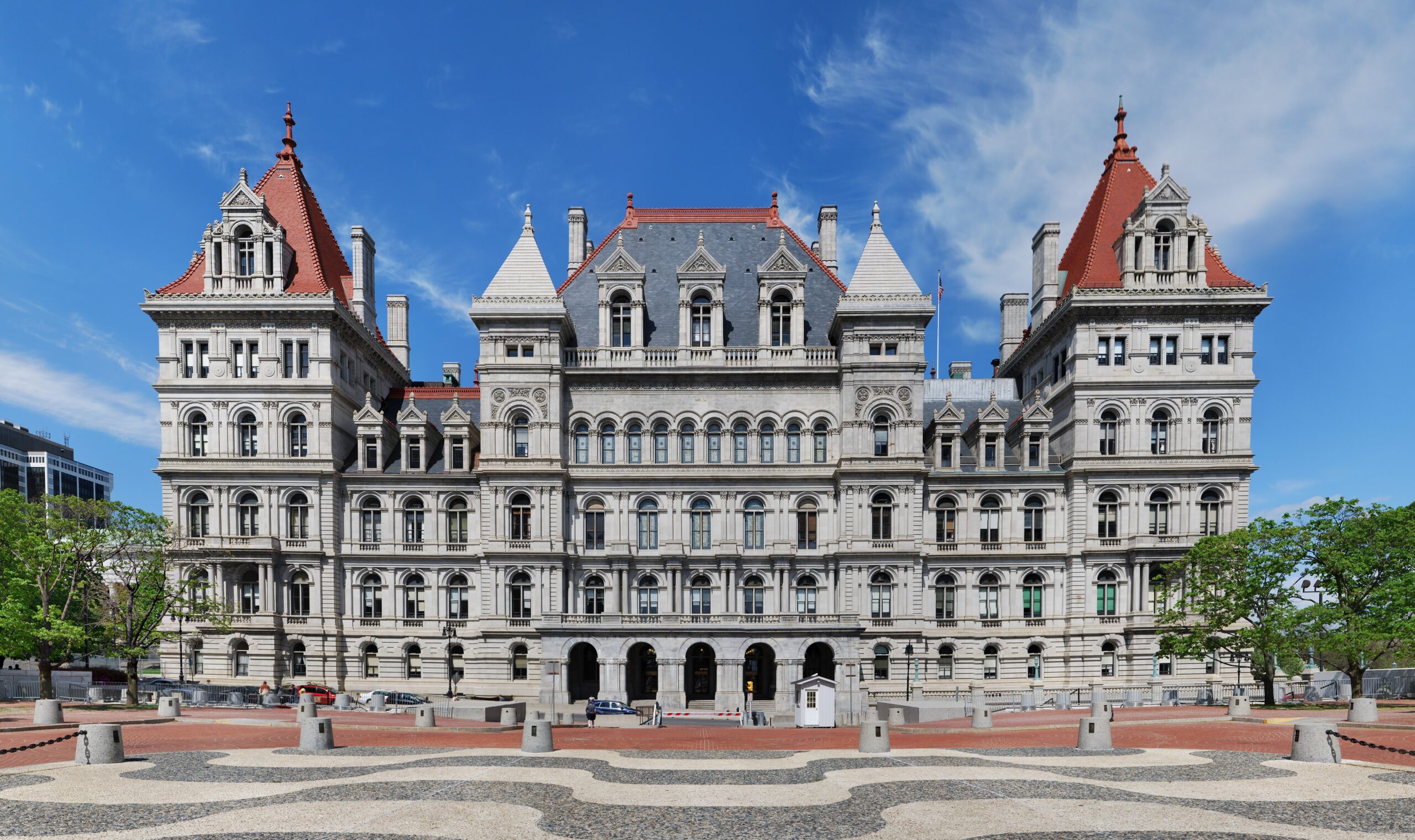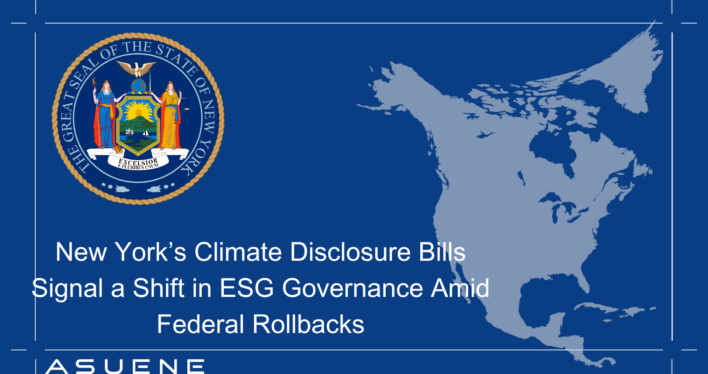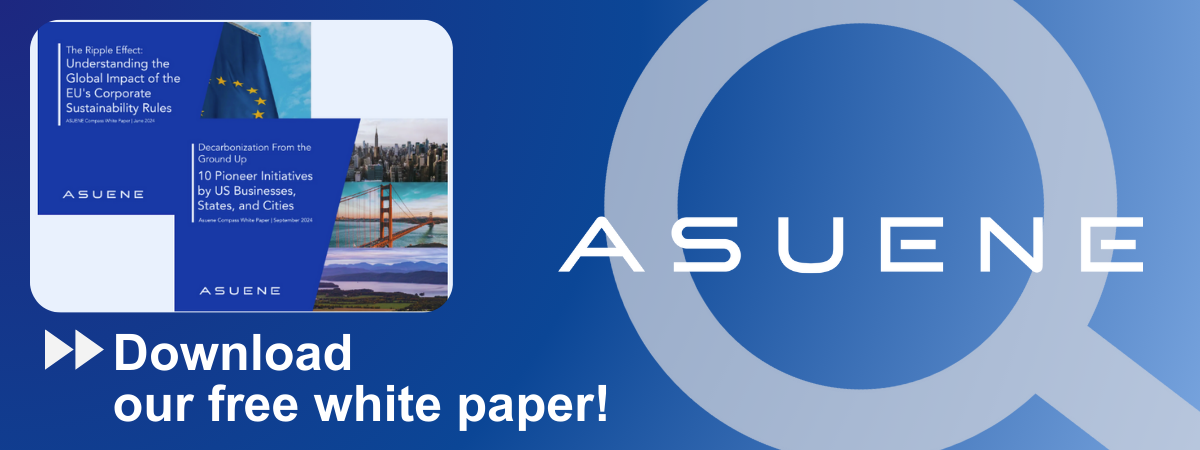- Article Summary
-
I. Introduction: A State-Led Push in a Federally Fractured Landscape
In early 2025, the state of New York reintroduced two pivotal bills—Senate Bill 3456 and Senate Bill 3697—designed to mandate greater transparency on corporate greenhouse gas emissions and climate-related financial risks. These initiatives arrive at a crucial juncture: just as the Trump administration reinstates its deregulatory climate agenda, major U.S. states like New York and California are stepping up to fill the leadership void in climate policy.
The implications of these bills stretch far beyond New York’s borders. In an era marked by inconsistent federal enforcement and intensifying climate-related risks, these state-level efforts reflect a growing realization that the burden of climate action cannot rest solely on voluntary corporate behavior or delayed national regulations. Instead, it’s increasingly clear that if America is to meet any form of climate responsibility, the vanguard must come from below—at the state and even municipal levels.

II. Dissecting the Disclosure Mandates: What New York Requires
New York’s two reintroduced bills offer a dual-pronged approach to environmental governance: one focusing on quantifiable emissions, and the other on financial risks related to climate change. Below is a detailed summary of the core regulatory elements embedded within these bills:
| Bill | Scope | Threshold | Start Year | Disclosure Standard |
|---|---|---|---|---|
| Senate Bill 3456 | GHG Emissions (Scope 1, 2, 3) | >$1 billion annual revenue | 2027 (Scope 1 & 2), 2028 (Scope 3) | GHG Protocol |
| Senate Bill 3697 | Climate-related Financial Risk | >$500 million annual revenue | 2027 | TCFD-like standards |
Senate Bill 3456, also known as the Climate Corporate Data Accountability Act, compels corporations with over $1 billion in annual revenue and operations in New York to disclose emissions under Scope 1 (direct), Scope 2 (indirect from purchased energy), and Scope 3 (indirect from value chains). These disclosures must comply with the internationally recognized Greenhouse Gas Protocol, ensuring transparency and cross-border comparability.
Meanwhile, Senate Bill 3697 requires all U.S.-based entities with annual revenues over $500 million doing business in New York to submit annual reports outlining their exposure to climate-related financial risks. This includes both physical risks (e.g., hurricanes, wildfires) and transitional risks (e.g., regulatory shifts, market adaptations).
III. Comparing State Approaches: A Patchwork of ESG Mandates
While New York’s legislative revival is significant, it is by no means isolated. Other states—most notably California—have passed similar laws aimed at compelling corporate climate accountability. However, many states still lag behind, creating a fragmented regulatory landscape.
Table 2: State ESG Regulation Comparison
| State | Disclosure Requirement | Revenue Threshold | Start Year |
|---|---|---|---|
| New York | Yes (GHG, Financial Risk) | >$500M / $1B | 2027–2028 |
| California | Yes (GHG, Financial Risk) | >$500M | 2026 |
| Illinois | Planned (Financial Risk) | TBD | 2027 (proposed) |
| Texas | No | N/A | – |
| Florida | No | N/A | – |
This patchwork of mandates creates both challenges and opportunities. For instance, businesses that operate across multiple jurisdictions must adapt to differing levels of compliance, which may involve significant administrative and legal costs. However, it also fosters competition among states in the realm of ESG leadership—creating a laboratory of innovation for sustainable policy.
California’s earlier start date (2026) and its mandate for companies to file climate-related disclosures based on TCFD frameworks have arguably set a precedent that influenced New York’s approach. Meanwhile, Illinois is exploring similar disclosures but lacks final legislative approval. In contrast, states like Texas and Florida, driven by anti-ESG political currents, have shown resistance to such regulatory developments, often citing concerns about overreach and economic implications.

IV. The Federal Backdrop: Deregulation Under the Trump Administration
New York’s climate initiatives are unfolding under the shadow of a re-empowered Trump administration. In one of his first moves after retaking office in 2025, President Trump signed Executive Order 14162, which formally withdrew the United States from the Paris Agreement and rolled back several environmental protections reinstated under the Biden administration.
Moreover, the Department of the Interior announced it would no longer require environmental impact assessments for oil and gas leases on federal lands in Western states. This regression reflects a broader federal strategy focused on fossil fuel expansion and economic deregulation, often in direct opposition to global ESG norms.
This ideological chasm between federal and state policies has effectively forced progressive states to take climate regulation into their own hands. For corporations, this has created a bipolar regulatory atmosphere—one that demands both vigilance and adaptability. Companies that fail to understand and prepare for these state-level developments risk regulatory penalties, reputational damage, and competitive disadvantage.
V. The Bigger ESG Picture: Risks, Opportunities, and Next Steps
The reintroduction of these bills in New York signifies more than just another legislative turn in state politics—it signals a meaningful shift in how ESG governance is evolving in the United States. Increasingly, the impetus for transparency, risk management, and long-term sustainability is coming from the bottom up.
For institutional investors, pension funds, and ESG-conscious shareholders, these bills offer a valuable new dataset that can influence capital allocation decisions. For corporations, they represent both a challenge and an opportunity: to get ahead of the regulatory curve, build more resilient value chains, and demonstrate a credible commitment to climate responsibility.
Moreover, these developments may accelerate momentum for a future federal ESG framework, particularly if political winds shift again. In the meantime, corporate ESG leaders would do well to anticipate this fragmentation and establish robust internal systems that can comply with both state and global standards.
Why Work with ASUENE Inc.?

ASUENE USA Inc., a subsidiary of Asuene Inc., is a key player in carbon accounting, offering a comprehensive platform that measures, reduces, and reports emissions, including Scope 1-3, with expertise in decarbonization. Asuene serves over 10,000 clients worldwide, providing an all-in-one solution that integrates GHG accounting, ESG supply chain management, a Carbon Credit exchange platform, and third-party verification.
ASUENE supports companies in achieving net-zero goals through advanced technology, consulting services, and an extensive network.

